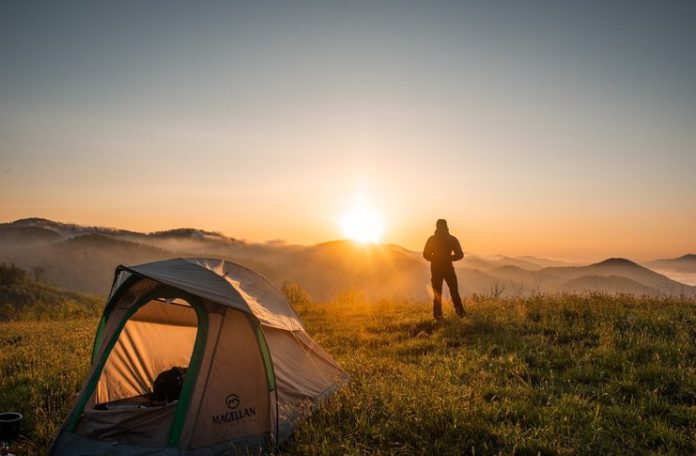
Imagine this: You’re standing atop a mountain, miles away from the nearest sign of human civilization, breathing in the crisp, unpolluted air as your eyes feast on the verdant sea of wilderness stretching before you. You’re off the grid, away from the digital shackles of daily life. Your smartphone is in your hand, capturing this quintessential moment of freedom. Yet, even here, in this idyllic sanctuary, your identity is being stalked—not by the wildlife or other trekkers, but by predators lurking in the nebulous plains of the digital world.
The great irony of our times is that the escape to serene, isolated locations often still involves a digital tether. You may be disconnected from your work emails, but are you really disconnected from the grid? The startling reality is that even when you think you’ve stepped away from it all, you could be one click away from identity theft.
This article takes a deep dive into an under-explored conundrum: how to protect your digital identity while navigating the off-the-grid locations that promise an escape from modern life. We’ll discuss the hidden vulnerabilities of your ‘disconnected’ life and arm you with practical strategies for guarding against identity theft.
Why Off-The-Grid Doesn’t Mean Off-The-Radar
Let’s dissect a common fallacy: that your remote location serves as a natural fortress against digital threats. After all, you’ve left the city far behind; surely its problems can’t follow you into the wilderness. You feel as if you’ve stepped into a protective bubble, far removed from the digital world. Sadly, the bubble is illusory. In the age where data travels faster than light—or at least it seems so—geography is a weak defense.
Consider the stories of Jane and Alex. Jane, an ardent mountaineer, had her bank account drained while she scaled the Andes, oblivious to the text alerts she couldn’t receive. Meanwhile, Alex, kayaking in the remote rivers of Alaska, returned home to discover someone had taken a ‘virtual tour’ of his emails. These instances serve as stark reminders that remote locations are not synonymous with ‘safe zones’ in the digital realm.
Watch this video of first-times in the off-the-grid travel:
Ah, but it’s not just human hackers you need to be wary of. Sometimes, the danger is pre-installed—malware and spyware hidden in apps that you innocently download to help with your journey. These programs are the silent scouts sent ahead by the digital pirates, and they operate beneath your radar, undetectable to all but the most vigilant. You might be enjoying your off-the-grid adventures without realizing that cybercriminals are already working hard to steal your data.
With these apparent threats, it is crucial to prepare for your trip. This entails more than just packing your travel essentials. Instead, it also requires paying attention to robust cybersecurity measures to keep you safe against the threat of online crimes, especially identity theft.
Practical Strategies for Combatting Identity Theft in Off-The-Grid Travel
There’s no single solution that works best for protecting your privacy, even when you’re off the grid. Instead of relying on one measure, the best thing you can do is combine multiple strategies for a holistic approach. Read on and let’s talk about the best things to do.
Identity Theft Protection Services
Identity theft protection services are the lookouts stationed on your digital frontier. These comprehensive services monitor your personal and financial data across a wide swath of platforms. Should anything suspicious occur—like your social security number appearing on a dark web marketplace—you’ll be alerted instantly.
Finding the best service when it comes to protecting your identity can be overwhelming. Nonetheless, this shouldn’t be a reason to be less careful. Take your time to compare the possibilities, so you can make a well-informed decision.
Watch this video for some more tips:
Virtual Private Networks (VPNs)
Imagine walking through a forest with a neon sign above your head, displaying your name, location, and your intent to all who pass by. This is virtually what happens when you use the internet unprotected.
Enter Virtual Private Networks (VPNs), the cloak of invisibility for your digital persona. A high-quality VPN does more than offer you an anonymous browsing experience; it encapsulates your data in a secure tunnel, making it extremely difficult for cybercriminals to intercept or decipher.
Imagine Emily, a traveler enjoying a cross-country adventure. One evening, she decides to make a hotel booking for her next destination. Oblivious to the risks, she connects to the open Wi-Fi at a local café. Just as she’s about to enter her credit card details, her VPN app alerts her to an attempted data breach. The VPN had effectively shielded her data, disguising her actual IP address and encrypting her financial information. Had she not been using a VPN, her identity and finances could have been easy prey for digital poachers.
Two-factor authentication (2FA)
Two-factor authentication is the deadbolt to your password’s standard lock. This extra layer of security typically involves a code sent to your mobile device, which you then input alongside your regular password. This can significantly reduce the odds of unauthorized access since it’s unlikely that a hacker will have both your password and physical device.
Maintaining 2FA in areas with spotty cell reception can be challenging. One workaround is to use authentication apps that generate timed codes offline or to pre-generate backup codes when you have internet access. Store these in a secure but accessible location to ensure you can always gain access to your accounts.
Offline Maps and Essential Apps
When you use apps like offline maps, translation services, or travel guides that don’t require an internet connection, you dramatically reduce your need to connect to potentially unsafe public networks. This is particularly valuable in remote or unfamiliar settings where secure connections may not be readily available.

By planning and downloading these crucial resources, you can equip yourself with the tools needed for a seamless travel experience, all while minimizing your digital footprint and susceptibility to cyber threats.
Physical Safety Measures
While a lot of attention is given to online security features like firewalls, we often forget about the basic step of physically securing our devices. The simple truth is that a phone or tablet that’s easily accessible is also easily stolen. And if it’s stolen while it’s unlocked, you’re practically handing over all your personal information to thieves. In the excitement of off-the-grid travel, losing your device can quickly turn a fun adventure into a serious problem.
To prevent this, there are some straightforward steps you can take. First, always use strong passwords and PINs for your devices. These PINs act as the first line of defense against unauthorized access. Using your device’s biometric features, like fingerprint or facial recognition, adds another layer of security. Lastly, when you’re not using your devices, especially in unfamiliar or risky areas, keep them in a hidden, secure place.
Wrapping Up
The essence of off-the-grid travel is about liberation—from routine, from technology, from the familiar. However, it’s clear that even in our quest for digital disconnection, we can’t afford to disregard the tendrils of technology that tether us to a more secure experience.
The very tools we seek to escape may be the ones that offer us the most freedom in these remote landscapes. By integrating select digital safety nets and practicing mindful behaviors, we can fully engage with the untouched wonders around us—free from the nagging worry of identity theft or data loss. So go ahead, and venture into the wild; just make sure you’re digitally prepared to truly get lost.









